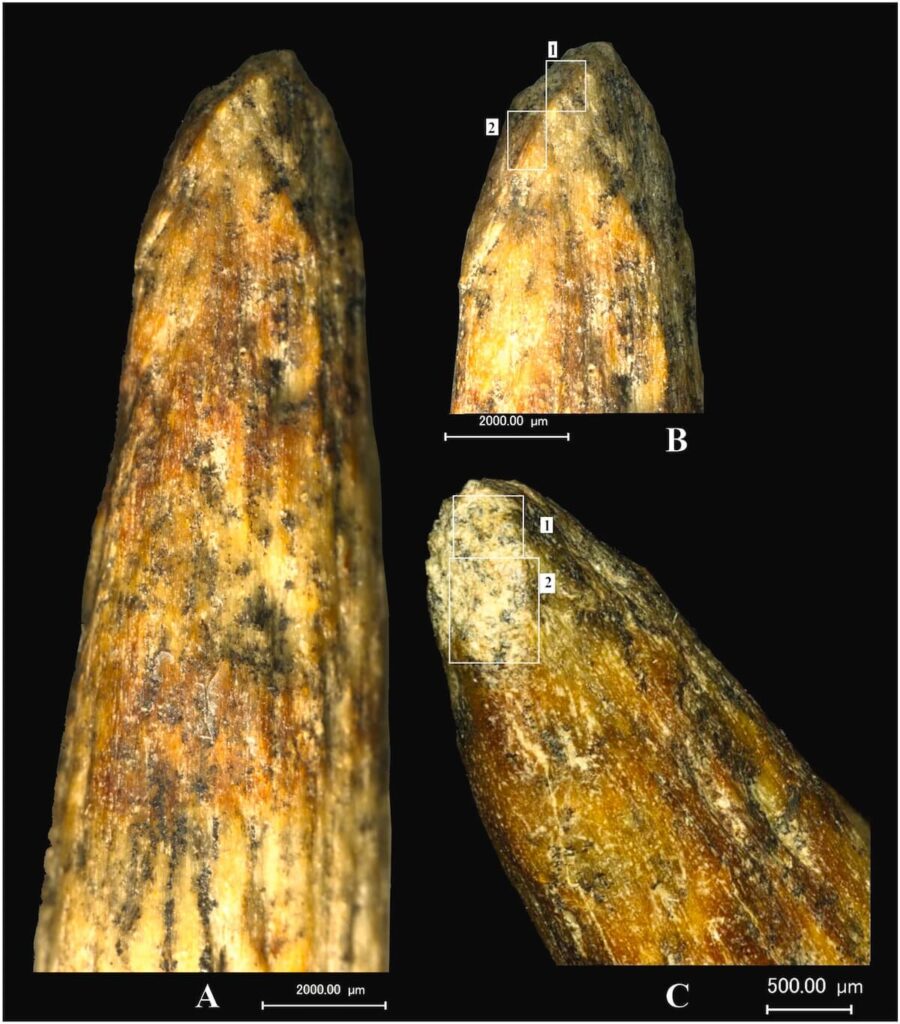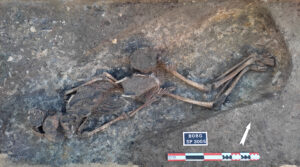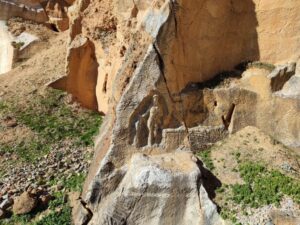A spearhead recently identified in a cave in the North Caucasus has turned out to be the oldest ever found in Europe. According to an international research team, the artifact—made from animal bone and dated between 80,000 and 70,000 years ago—was almost certainly crafted by Neanderthals. The study, published in the Journal of Archaeological Science, challenges the long-held notion that Neanderthals were limited to simple stone tools.
Evidence of Planning and Precision
The 9 cm-long spear tip, originally unearthed in 2003 but only recently fully examined, was found among animal bones and a hearth layer. Using spectroscopy, CT scanning, and advanced microscopy, researchers determined that the spearhead was carved from a bison bone and attached to a wooden shaft using natural tar. The microscopic damage patterns suggest that it was used in hunting and had struck a hard target—likely its prey.
Far Ahead of Its Time
The spear’s age predates the arrival of Homo sapiens in Europe (ca. 45,000 years ago), confirming that Neanderthals—not modern humans—were the likely creators. This challenges the stereotype of Neanderthals as technologically primitive. The spear not only required technical skill, but also foresight in both design and use, suggesting advanced cognitive abilities.

A Rare Survival
One mystery remains: Why haven’t more bone spearheads from Neanderthals survived? Researchers propose that most were lost to time due to organic decay, unlike this one which survived thanks to the unique preservation conditions of the cave where it was buried.
Changing the Narrative
This discovery adds to growing evidence that Neanderthals were innovative, adaptable, and strategic thinkers. As Dr. Elena Voskaridou, a co-author of the study, explains:
“This isn’t just about one tool—it’s about rewriting how we understand Neanderthal intelligence.”
DOI: 10.1016/j.jas.2025.106223
Cover Image: Four photographs of the tapered part of the specimen. White rectangles marked with numbers indicate: 1 – areas of red-brown coloration of the type caused by heat at the tip; 2 – location of the photograph of bitumen residue. Credit: Liubov V. Golovanova et al





